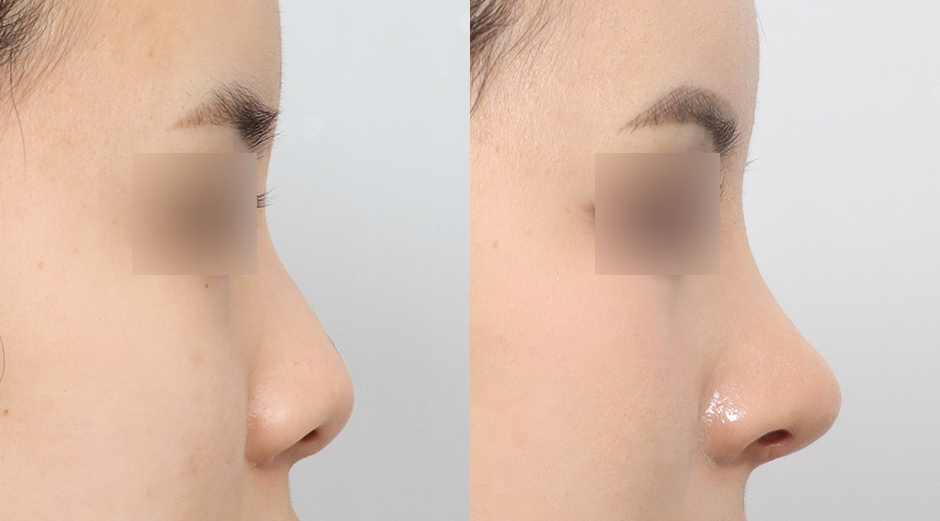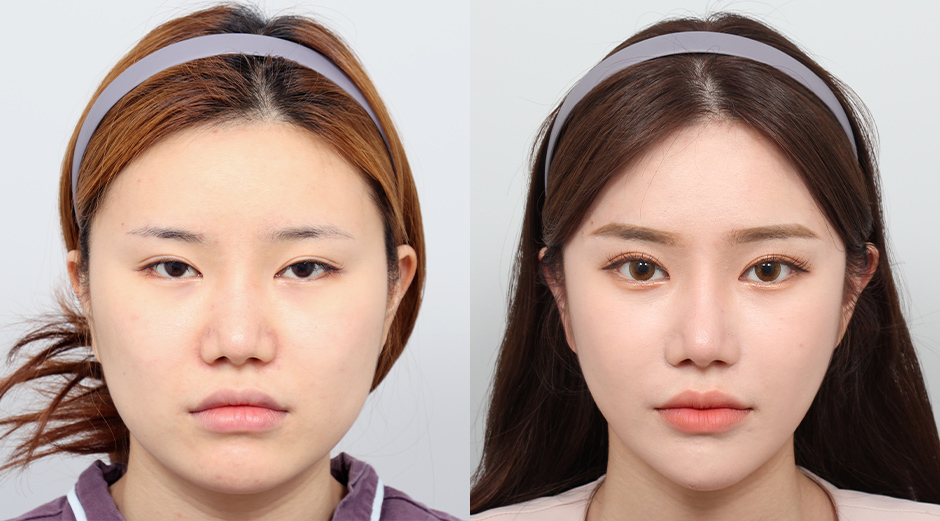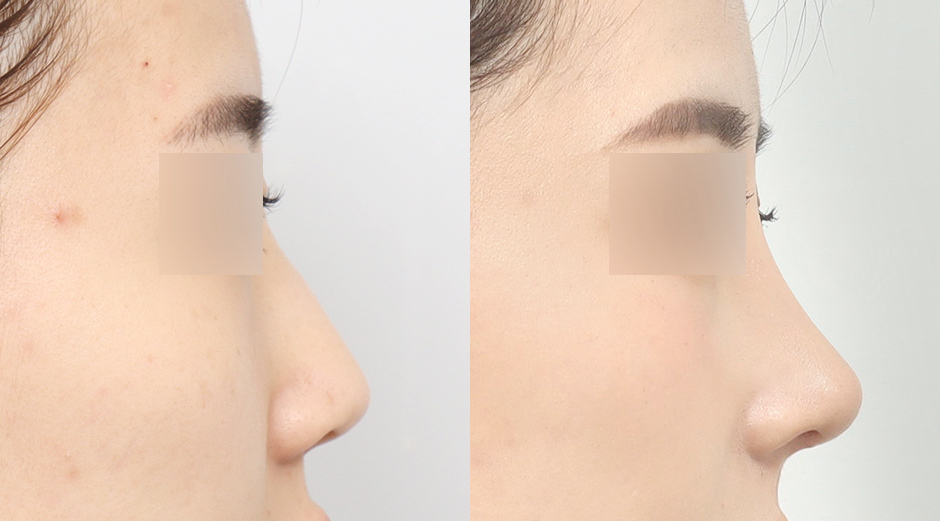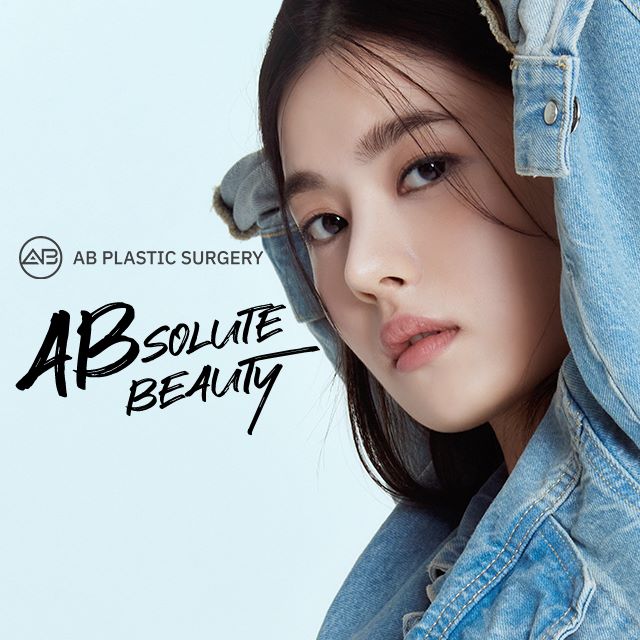Understanding the Differences: Rhinoplasty and Nose Fillers
Table of Contents
1. Defining Rhinoplasty and Nose Fillers
2. Comparing the Benefits of Rhinoplasty and Nose Fillers
3. Risks and Considerations of Rhinoplasty and Nose Fillers
4. Decision Factors for Choosing Between Rhinoplasty and Nose Fillers
When considering cosmetic improvements for the nose, individuals often find themselves choosing between rhinoplasty and nose fillers. These procedures offer distinct approaches to nose reshaping, each with its advantages and drawbacks. Here, we delve deeper into the specifics of each option, offering a detailed comparison to help you make an informed decision aligned with your aesthetic goals, financial considerations, and lifestyle preferences.
Defining Rhinoplasty and Nose Fillers
What is Rhinoplasty?
Rhinoplasty, also known as surgical nose reshaping, is a complex procedure that modifies the structural elements of the nose bone and cartilage to enhance facial harmony and, if needed, improve nasal function. This surgery is categorized into two main types: cosmetic rhinoplasty, which focuses solely on improving the nose's appearance, and functional rhinoplasty, which aims to resolve breathing issues alongside cosmetic concerns.
Learn more about functional rhinoplasty with our previous blog post: Top 10 Things to Know About Deviated Nose (Functional Rhinoplasty) in Korea

What are Nose Fillers?
Nose fillers, commonly referred to as non-surgical rhinoplasty or "liquid rhinoplasty," involve the careful injection of dermal fillers into the nose to subtly enhance its shape. This procedure is ideal for individuals looking for minor adjustments without the downtime and risks associated with surgery. Common areas addressed by fillers include smoothing out dorsal humps, lifting the angle of the nasal tip, or enhancing the nasal bridge.
In summary, while rhinoplasty offers a permanent and transformative solution to both aesthetic and functional nasal issues, nose fillers provide a non-surgical alternative for temporary, subtle enhancements with minimal downtime.
Comparing the Benefits of Rhinoplasty and Nose Fillers
Benefits of Rhinoplasty
Rhinoplasty is known for its ability to deliver durable and comprehensive changes to the nose’s structure, making it an ideal choice for those looking to correct significant aesthetic or functional issues. Here are some of the primary benefits:
-
Lasting Alterations: The results of rhinoplasty are intended to be permanent, providing a lifetime solution for cosmetic enhancements and functional improvements. Once the surgical modifications are fully healed, the changes are designed to last, eliminating the need for further intervention unless revisions are desired.
-
Extensive Modifications Possible: Rhinoplasty offers the flexibility to make substantial modifications to the nasal structure. Surgeons can reduce the overall size of the nose, reshape the nasal tip to be more aesthetically pleasing, straighten the nasal bridge for a more symmetrical appearance, and correct septal deviations that may be causing breathing issues. This procedure can dramatically improve not only the look but also the function of the nose.
-
Customized Outcomes: Each rhinoplasty procedure is highly tailored to the individual. Surgeons take into account the patient's unique facial features, skin thickness, ethnic background, and personal aesthetic goals. This customization allows for results that are harmonious with the rest of the patient’s facial features and meet their specific needs and expectations.

Benefits of Nose Fillers
Nose fillers offer a non-invasive alternative to rhinoplasty with several distinct advantages for those seeking minor adjustments or temporary enhancements:
-
Quick Results: One of the most appealing aspects of nose fillers is the immediacy of results. Enhancements are visible almost immediately after the procedure, making it a great option for those who need quick improvements for events or are eager to see their new look without waiting for the lengthy recovery associated with surgery.
-
Reversible: Unlike rhinoplasty, the effects of nose fillers are not permanent. If a patient is dissatisfied with the outcome or simply changes their mind about their desired appearance, certain types of fillers can be dissolved with an enzyme called hyaluronidase, effectively reversing the enhancements. This reversibility adds a layer of confidence for patients wary of permanent changes.
-
Low Risk and Minimal Recovery: As a non-surgical procedure, nose fillers come with fewer risks compared to surgical rhinoplasty. The side effects are typically minimal, such as temporary swelling or bruising at the injection sites. Most patients can resume their normal activities immediately after the procedure, making it an excellent option for those who cannot afford downtime or prefer a less invasive approach.
By offering both immediate and reversible results with minimal recovery time, nose fillers provide a flexible and low-commitment option for nasal enhancement, while rhinoplasty offers a permanent and transformative solution to more significant nasal concerns. Each procedure carries its own set of benefits, making them suitable for different needs and preferences.
Risks and Considerations of Rhinoplasty and Nose Fillers
Risks of Rhinoplasty
Rhinoplasty, while offering transformative results, carries inherent risks and requires significant consideration due to its surgical nature:
-
Recovery Process: The recovery from rhinoplasty can be extensive. Initially, patients might experience significant swelling and bruising around the eyes and nose, which generally subsides within the first few weeks. However, the nose may continue to undergo subtle changes and settling for up to a year after surgery. This lengthy recovery period requires patients to adjust their schedules and lifestyle temporarily.
-
Higher Cost and Commitment: Opting for rhinoplasty requires a substantial financial investment, as it is typically more expensive than non-surgical alternatives. The costs cover the surgeon's fees, anesthesia, facility costs, and postoperative care. Moreover, because the results are permanent, there is a significant emotional commitment to the outcome, underscoring the need for careful decision-making and choosing an experienced surgeon.
Risks of Nose Fillers
Nose fillers, though less invasive, also present certain risks and limitations that should be considered:
-
Potential for Adverse Effects: While generally safe, injections of nose fillers can sometimes lead to complications. These include allergic reactions to the filler material, asymmetry where the filler is not symmetrically applied, and in rare instances, vascular complications such as vascular occlusion, where the filler blocks a blood vessel.
-
Temporary and Maintenance Required: Unlike rhinoplasty, the effects of nose fillers are temporary, typically lasting from 6 to 18 months depending on the type of filler used. This temporary nature requires patients to return for periodic treatments to maintain their desired appearance, which can add up in terms of cost and time over the years.
-
Limited Scope: Fillers are effective for making subtle enhancements such as smoothing out dorsal humps or lifting the nasal tip. However, they are limited in their capacity to make significant structural changes to the nose, such as reducing its overall size or correcting internal defects that might affect breathing. For these more extensive changes, surgical intervention remains necessary.
Both rhinoplasty and nose fillers offer pathways to improved aesthetic appearance of the nose, but they come with different sets of risks and considerations. Patients considering either option should thoroughly discuss these factors with their healthcare provider to make an informed choice that aligns with their aesthetic goals, budget, and willingness to undergo maintenance or manage recovery times.
Decision Factors for Choosing Between Rhinoplasty and Nose Fillers
When deciding between rhinoplasty and nose fillers, several factors need to be carefully considered to ensure that the chosen procedure aligns with your needs, expectations, and lifestyle. Here’s a more detailed exploration of these decision factors:

Aesthetic Objectives
-
Rhinoplasty: This procedure is ideal for those seeking substantial, permanent corrections to the nose’s structure and appearance. It’s particularly suited for addressing significant cosmetic concerns such as a large bump on the bridge, a drooping nasal tip, or a crooked nose.
-
Nose Fillers: If your cosmetic goals include making finer adjustments, such as smoothing out small bumps or slightly enhancing the nasal tip’s definition, nose fillers are an excellent option. They are also ideal for individuals who wish to experiment with the shape of their nose before deciding on permanent surgical alterations.
Financial and Lifestyle Considerations
-
Rhinoplasty: Consider this procedure if you are prepared for a significant one-time investment. Rhinoplasty is more costly upfront due to the surgical, facility, and anesthesia fees. Additionally, it requires a longer recovery period during which you may need to take time off from work and social activities. The financial and time investment is considerable, but the results are lasting and can eliminate the need for future corrective procedures.
-
Nose Fillers: For those seeking a less invasive option with minimal downtime, nose fillers are more suitable. The initial cost is generally lower than that of rhinoplasty, and there is little to no recovery time required.
Professional Consultation
Consulting with a plastic surgeon or dermatologist who specializes in cosmetic procedures of the nose is crucial. These professionals can provide a thorough assessment of your nasal structure, skin type, and aesthetic goals. During a consultation, they will discuss the potential outcomes of each procedure and outline the risks involved. This discussion should also cover the post-procedure care required and any lifestyle adjustments that might be necessary. A skilled practitioner will help you understand the scope of each procedure and recommend the best option based on your specific needs and expectations.

At AB Plastic Surgery, we understand the importance of choosing the right procedure and practitioner for your rhinoplasty. We invite you to schedule a consultation, available both online and offline, to discuss your aspirations and explore your options with our highly skilled team of surgeons.
AB Plastic Surgery is renowned for its advanced safety protocols ensuring that your health and comfort are prioritized at every step of your journey. Our doctors are not only leaders in their field but are also deeply committed to achieving the most aesthetically pleasing and natural-looking results, which is reflected in our high patient satisfaction scores.
We also encourage you to view our gallery of before-and-after photos of real patients who have undergone rhinoplasty at our clinic. These images showcase the expertise of our surgeons and the transformative results that can be achieved under their care.
Don’t hesitate to reach out and take the first step towards a new you by booking your consultation at AB Plastic Surgery today.





